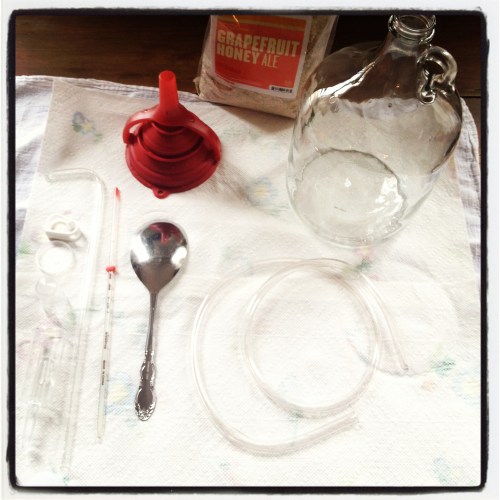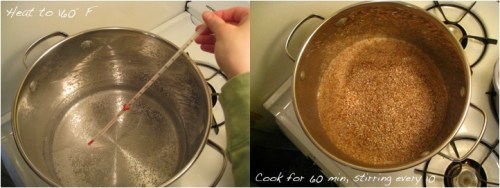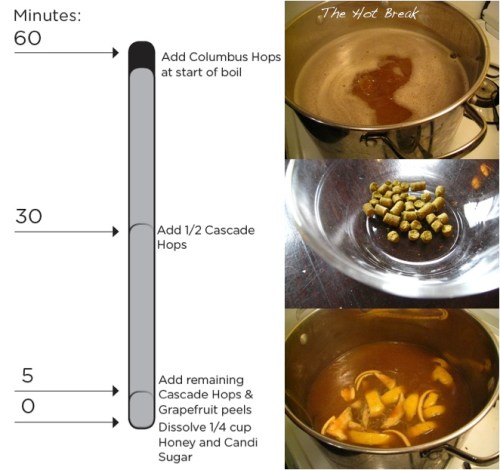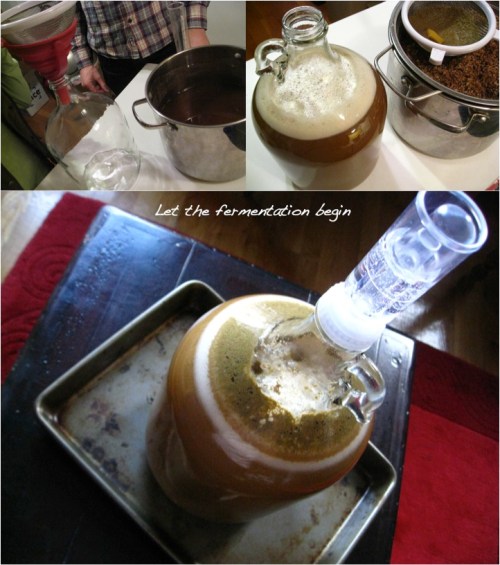Let me start by saying this was shockingly easy and a lot of fun. It was perhaps made easier by the Roaring Brook Dairy Mozzarella Cheesemaking Kit that my brother gave me for Christmas. The kit comes with everything you need, including the gloves and thermometer, but most importantly the few specialty items required for cheesemaking {citric acid, rennet}. Now that I have stretched my homemade curd skills, these are things I plan to stock up on so I can continue to make the mozz monday, tuesday, thursday.
Homemade Fresh Mozzarella
Ingredients:
1 gallon pasteurized whole milk {not organic or ultra-pasteurized}
1.5 teaspoon citric acid
1/4 rennet tablet
1 teaspoon salt {or more to taste}
1 1/4 cup chorine-free filtered/spring water, divided
Equipment:
Thermometer
Rubber gloves
Measuring spoons
Strong slotted spoon {this is a great one}
Microwave safe mixing bowl
Colander
1-gallon stainless steal or non-aluminum pot
PREPARATION:
- Wash your hands and make sure all equipment is completely sterilized and clean {a run through the dishwasher is a good way to do this to eliminate an dirt or dust that may impact the curd}.
- Have a timer near your stove.
- Prepare the rennet water solution by dissolving 1/4 tablet of rennet in 1/4 cup of cold chlorine-free water {not tap water and if you buy bottled, be sure to buy spring-sourced}. Set aside. Wrap the remaining pieces of tablet and store in freezer for future use.
- Measure 1.5 teaspoons of citric acid into 1 cup of cold chlorine-free water. Stir to dissolve completely and set aside.
HEATING THE MILK:
- Pour the milk in the pot.
- Heat the milk over a medium-low flame {about 10 minutes}. Using the thermometer, check the temperature. At 85° F, add the citric acid. Stir with a slotted spoon or whisk slowly for 20 seconds.
- When milk reaches 100° F {about 5 minutes}, stir in the rennet-water solution and add to the milk. Using a slotted spoon gently stir the milk in an up and down motion for approximately 30 seconds.

Step 1-Heating the Milk
DEVELOPING THE CURDS:
- Heat the milk a little more to 105° F and then turn the heat off. Cover the pot and let sit for 10 minutes. You should see signs of coagulation. The curds {the white mass} should look shiny and being to pull away from the side of the pot. The whey {liquid} should look like it has a yellow tint to it.
- To check if the curds are ready gently press the back of a spoon into the curds. If it leaves a dent, the curds are ready. If it does not, allow the curds to sit for another 2 minutes.
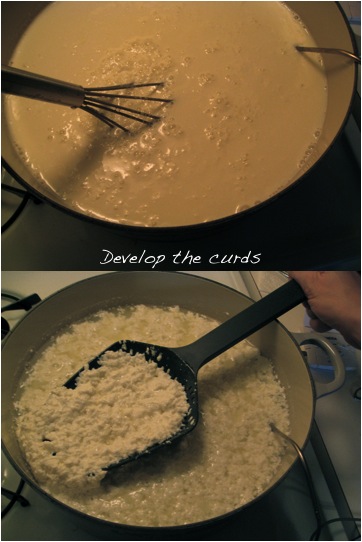 DRAINING THE CURDS:
DRAINING THE CURDS:
- The goal is to drain as much whey as possible from the curds while handling gently.
- Place the colander over a large microwaveable bowl.
- Using a slotted spoon, gently lift up the curds and let the whey drip back into the pot. Then place the curds in the colander.
- When all the curds are in the colander, gently press the curds with the palm of your hand to push out as much whey as possible. When there is almost no whey coming out of the curds place the curds in an empty microwaveable bowl.
- Again, using the palms of your hands, press down gently on curds and remove as much whey as possible.
- You can save the whey for Homemade Spicy Carrot Kimchi! & Apple Chutney!.
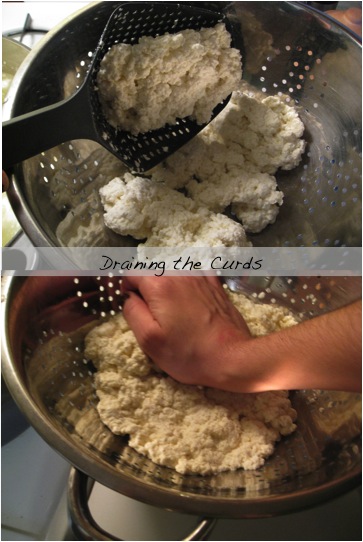 COOKING AND KNEADING THE CURDS:
COOKING AND KNEADING THE CURDS:
- Microwave the curds for 1 minute.
- Put on a pair of rubber gloves to protect your hands from the heat. Remove the bowl of curds. Drain any whey and then gently fold the curds over to distribute the heat. Continue to drain out any whey.
- Microwave the curds for an additional 30 seconds. Drain and kneed the curds again. Knead the curds until it begins to look smooth, shiny and is firming up.

STRETCHING THE CHEESE:
- Take the temperature of the cheese. It must be 135° F to stretch properly. If it isn’t hot enough, microwave for another 30 seconds until the cheese reaches temperature. Add the salt and any other herbs you want to use and begin to work into the cheese by stretching and folding, and repeat this movement.
- Holding the cheese up, let it fall on itself. If you prefer a softer texture, don’t stretch the cheese as much. As soon as it is smooth and shiny {looks like taffy} shape it into a ball.
- Form ball by pulling and tucking the edges underneath the cheese and smoothing the top and sides. If you want to eat it warm, just wrap it tightly in plastic wrap. Or, if you want to keep the shape, place each ball in a large bowl of ice water for 15 minutes.
- Remove from water, wrap in plastic wrap and refrigerate.

Step 5-Stretching the Mozz

Fresh Mozz!
Get Back to Your Roots | More Scratch Projects:
CHEESE | Homemade Ricotta
BREAD | 101: How to Make Bakery Quality Bread @Home
PICKLES | Homemade Spicy Pickled Carrots
KIMCHI | Homemade Spicy Carrot Kimchi! & Apple Chutney!





